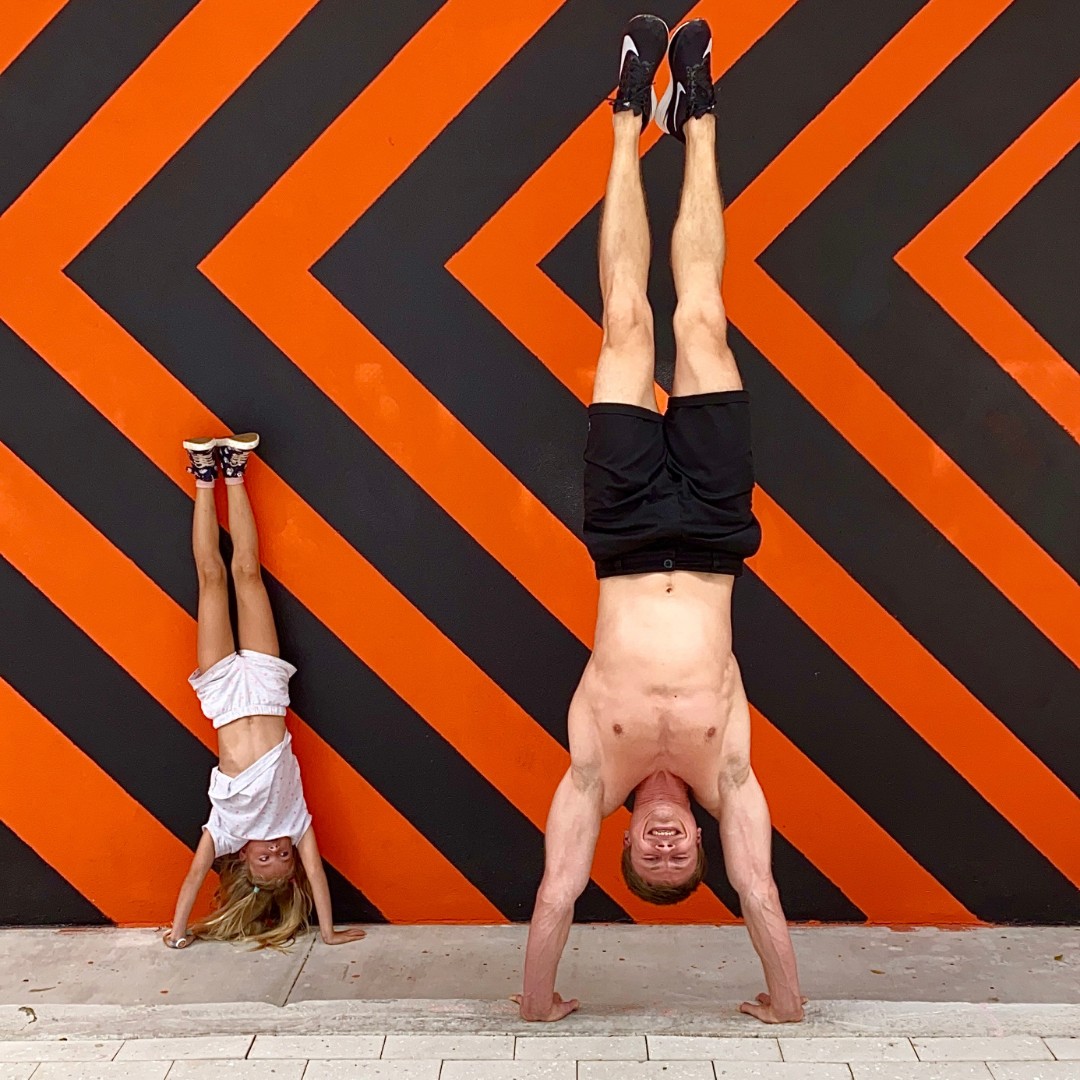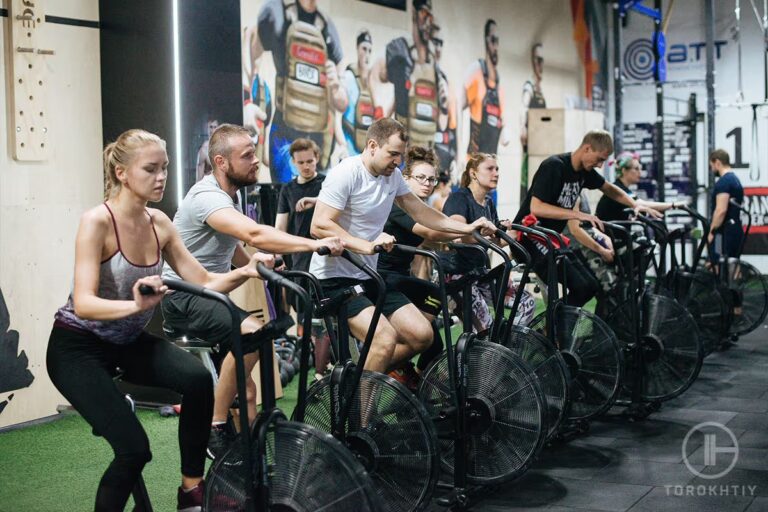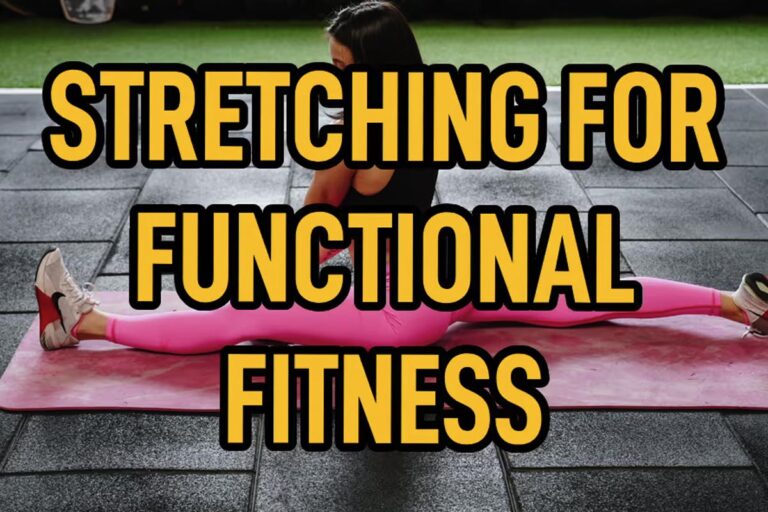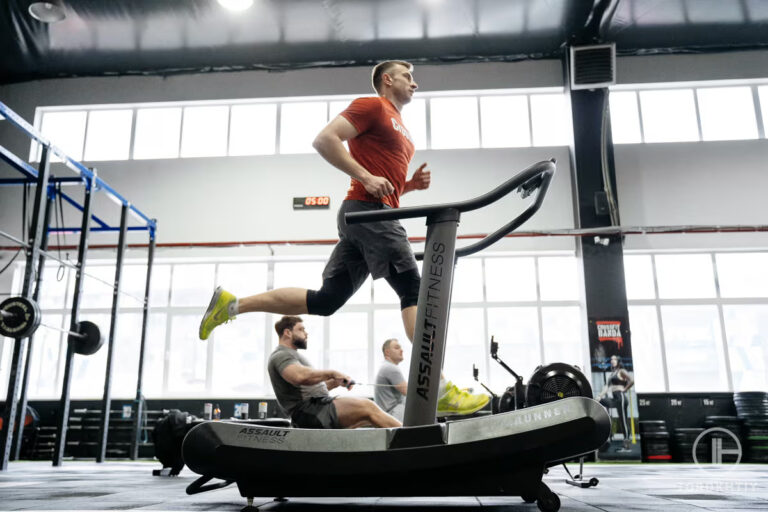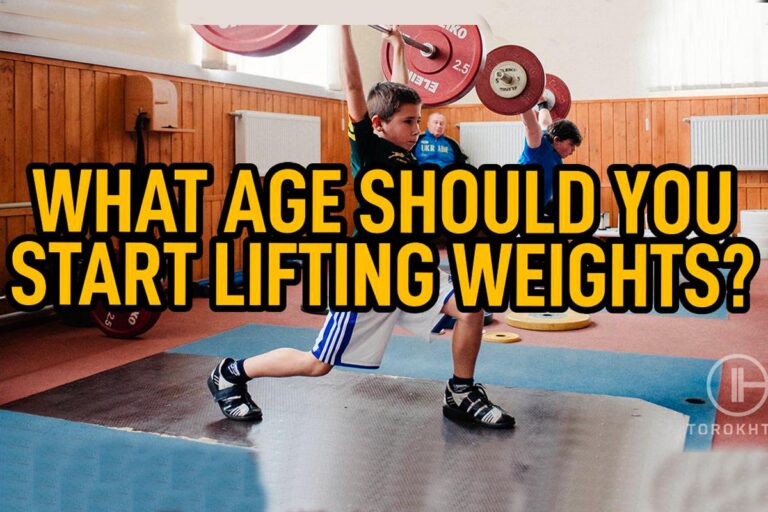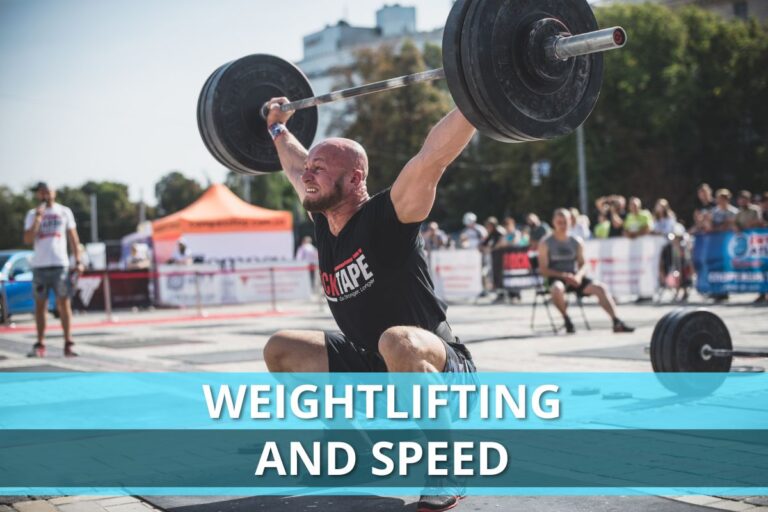Handstand Drills and How to Improve Them – Guide from a Former Cirque Du Soleil Artist
A Handstand is a basic gymnastics exercise that involves using your hands to stand up instead of your feet. Although handstands use a simple concept, they can be difficult to perform without the right practice.
To help you with your handstand drills, I’ve explained the possible variations, tips to improve your technique, and the potential risks involved. Let’s take a look below!
Handstands are a great exercise to build core strength, develop coordination, and improve your balance. Many handstand drills can be performed at beginner and advanced levels to improve your handstand control and technique. Alongside regular drills for handstands, focus on your wrist strength and shoulder mobility.
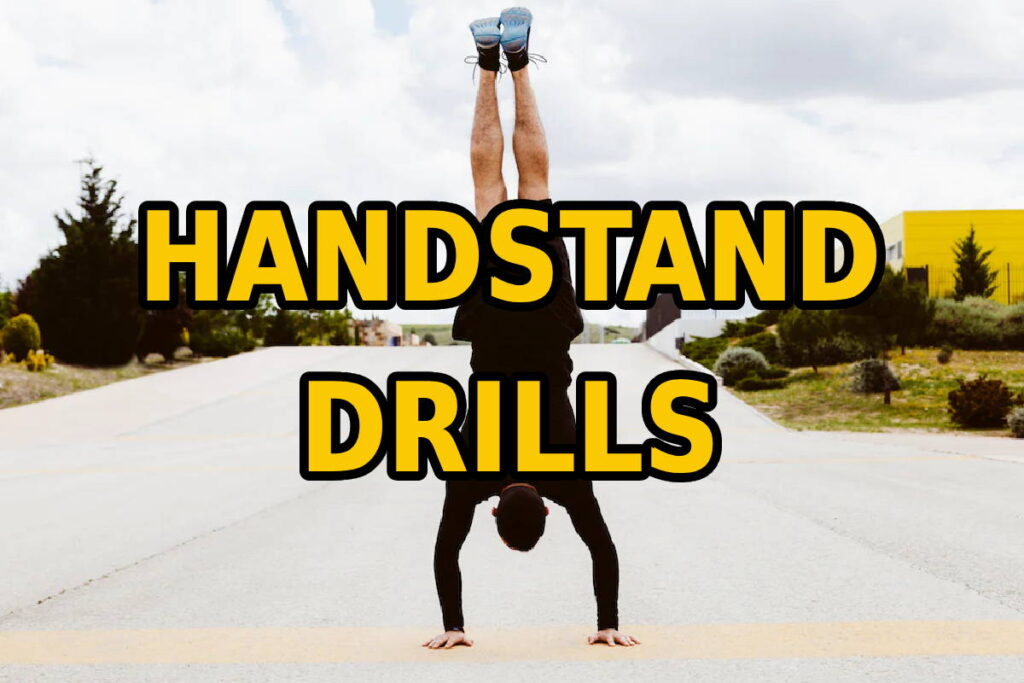
Handstand Drills
Progressing your handstand technique requires regular practice. Multiple drills can be performed. Start with the beginner drills below and work up to the advanced ones as you become more confident. Multiple other drills are also available depending on your preferences.
1. Beginner – Lunges
Lunges are a great exercise to practice the way you enter and exit a handstand. They are easy to perform meaning they are suitable for beginners.
Start with your legs together. The idea is to move into the T shape that you’ll want to be in when entering the handstand. Keep your arms straight above your head and touch your ears. Next, step forward so that one leg is in line with your shoulders. This is how you will enter the handstand. Repeat several times.
2. Beginner – Handstand Shape On The Ground
Lying face down on the floor, raise your arms so that your biceps are touching your ears. Tighten your upper body so that your chest and armpits come off of the floor, creating a hollow position. This is how your handstand should look, but upside down!
3. Beginner – Open Shoulder Walks
Start by getting into a normal plank position. Walk your feet back slightly to open up your shoulders. Move in any direction whilst aiming to keep a tight body position. This can then be transferred over to a handstand.
4. Beginner – Bunny Hops
Perform these with your hands shoulder-width apart, flat on the floor, and with your fingers spread out for additional balance. Get down into a tuck position and push off of the floor under control. The aim is to get into a handstand by controlling your jump. This drill helps improve your handstands by making you control the movement in order to complete it.
5. Advanced – Pike Ups On A Chair
Get into the plank position with your shoulders over your hands and feet on the chair. Bracing your core, step backwards with your hands. Move your body under your hips and reach up with your pelvis so that your weight is shifting over your body vertically. The goal of this movement is to have your bottom over your shoulders. Go back to your starting plank position in a controlled manner and repeat.
6. Advanced – Handstand On A Parallette Against The Wall
This is a more advanced drill as it requires you to perform a handstand using a parallette, which requires more balance. With the parallette against the wall, kick up to a handstand and hold for as long as possible. This drill really helps to work on your core muscles needed to balance correctly.
Tips To Improve Your Handstand
Alongside performing the handstand drills for beginners and advanced athletes, follow the tips below to really improve your handstand technique.
1. Build Your Upper Body and Core Strength
When performing a handstand, your upper body and core muscles work to keep your body balanced. Therefore, a strong upper body and core strength are essential. Regular resistance training with a focus on upper body exercises including push-ups, shoulder presses, and handstand push-ups should help to develop upper body strength.
To build core stability, adding simple exercises such as planks, side planks, and hollow holds to your workout routine will be great to develop the correct balance.
2. Develop Wrist Mobility And Strength
Handstands and handstand drills place your wrist joints under increased pressure. Therefore, good wrist mobility and strength are paramount to avoid potential injury.
Suitable wrist exercises include wrist flexions and extensions, wrist circles, and wrist rotations. Finger push-ups and forearm planks provide advanced ways to strengthen your wrist joints.
3. Practice The Correct Body Alignment
Using a mirror, repeatedly check your body position and move joints that are slightly out of place. Ensure your arms are straight whilst being shoulder-width apart. When pushing off the floor, your biceps should be touching your ears. When engaging your core, your wrists, hips, and feet should all be in line.
4. Practice Handstand Drills Regularly
As with most things, consistency is key. Dedicating several sessions to handstand practice each week allows you to see decent improvement and improve motivation.
Prioritize quality over quantity when practicing. If you find yourself tiring and regularly coming out of the correct position, take a rest and try again the next session. As you keep improving, you’ll be able to perform the handstand drills more regularly.
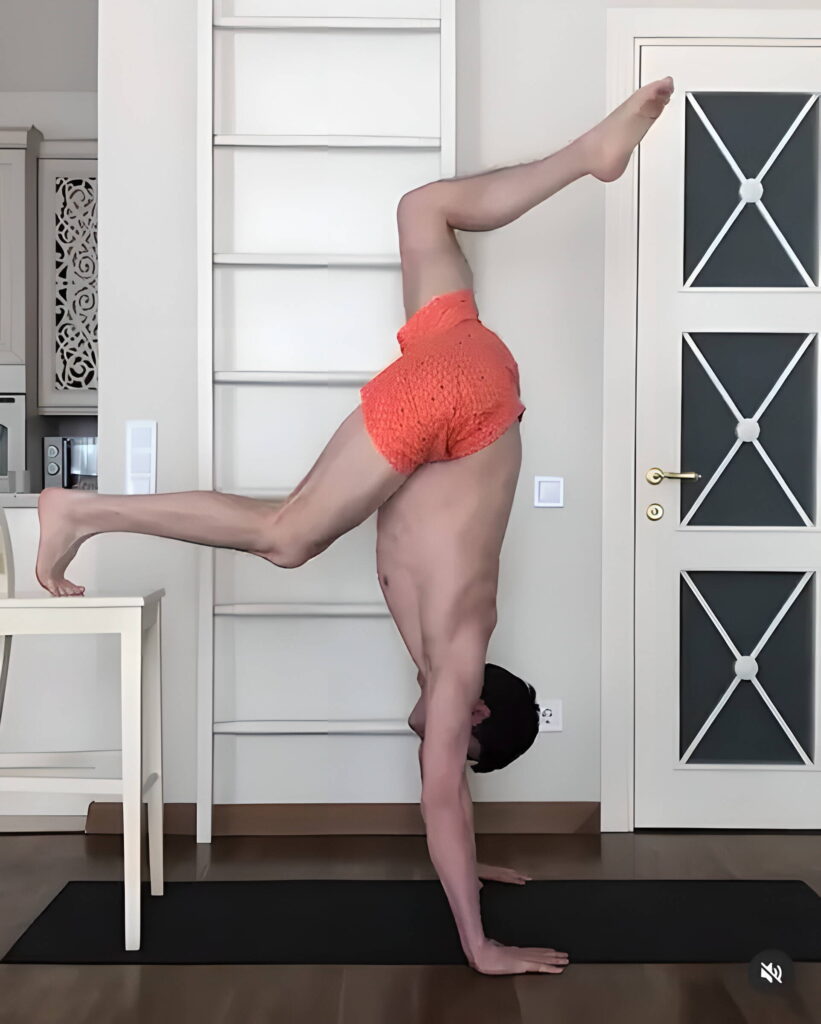
Risks Of Doing Handstands
Performing handstands with the correct technique are safety precautions can limit the risk of injuries. Certain risks still exist that need to be taken into account.
1. Falling
During a handstand, you run the risk of falling if your body deviates from the tight, controlled position. Falling without control onto the floor or an object can cause injuries to your body or possibly to others.
Make sure to perform the handstand drills in a safe, padded environment to reduce the risk of injury.
2. Wrist And Shoulder Strain
Handstands cause all your body weight to be supported by your wrist, shoulders, and elbows. This puts a lot of strain on these joints and surrounding muscles, especially if you don’t have enough strength to perform them correctly.
Make sure to warm up first, performing shoulder and wrist mobility exercises. Develop your upper body strength first if you don’t have enough to perform handstands safely.
3. Spinal Injuries
Performing a handstand with the incorrect body position can put a lot of stress on your spine. Maintaining proper alignment and engaging your core will help avoid this strain.
4. Triggering Pre-Existing Conditions
If you have a pre-existing shoulder or wrist injury, make sure to take extra care before performing any of the handstand drills above. The increased stress placed on these main joints may trigger pre-existing conditions that were currently under control.
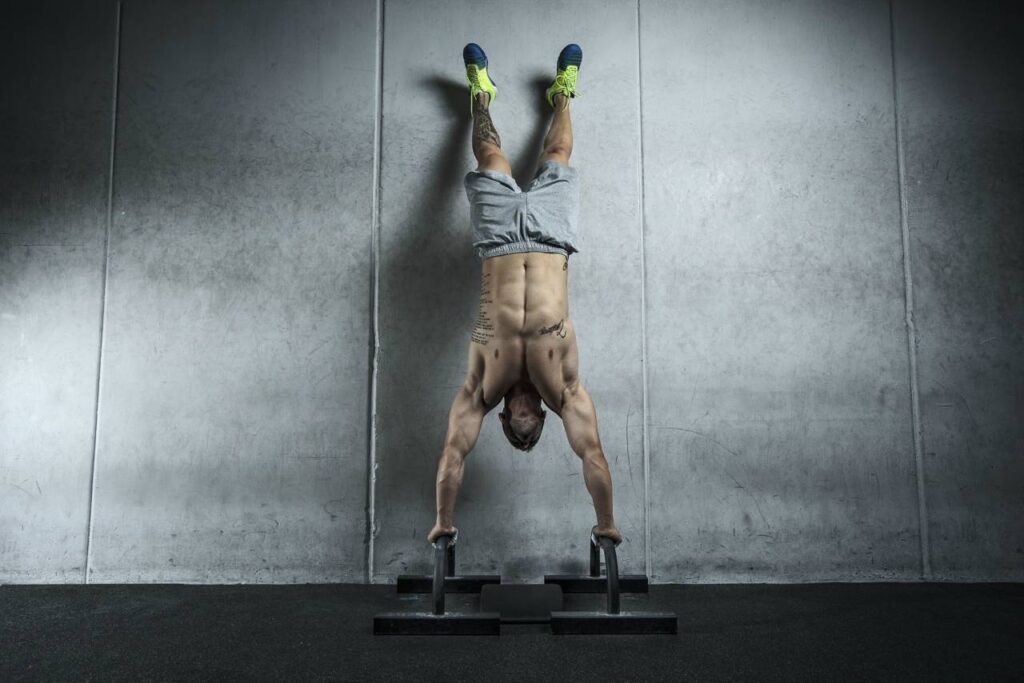
🔻21-DAY HANDSTAND CHALLENGE
Master Your First Handstand in 21 Days!
This program will help you to:
- ✅ Perform the Handstand Without a Wall
✅ Overcome Your Fear
✅ Master the Technique of Entering the Handstand
✅ Strengthen Shoulders and Core Muscles
✅ Improve Coordination, Balance, and Stabilization
✅ Have Fun: Enjoy the process
☀️Designed by a Cirque du Soleil Artist, Exclusively for You. Use it!
FAQ
Can I Learn A Handstand In 30 Days?
It’s possible to learn a handstand within weeks with the right dedication. You’ll need to have enough core strength, the correct technique, and make sure to practice regularly.
Perfecting a handstand can take much longer and depends on several factors which I’ve described below.
How Many Months Do I Need To Master A Handstand?
Mastering the handstand can take a few months to over a year. This time depends on the handstand drill you want to perform. For more advanced movements away from the wall such as handstand walks, you are looking at months with the correct training and technique.
Conclusion
Handstand drills provide an effective method to improve your handstand by working on elements of technique or other factors that contribute to a successful handstand. Make sure to start with the beginner drills first before working up to the advanced ones.
Handstands are a hard skill to master, meaning they may take several weeks up to many months or years to master and perform more advanced variations. Follow the tips I’ve given above and proceed with caution by learning the potential risks.
Alongside this, handstands may have certain beneficial effects on your cardiovascular health, but more research is needed.
Can you do a handstand? Have you ever tried any of the advanced drills? Let’s talk about handstands below.
Also read:
- How Long Does It Take To Be Able to Do the Splits
- How to Do the Middle Splits
- Benefits of Splits
- Side Splits
- How to Do the Splits in 30 Days
- How to Do Front Splits
- How to Do a Handstand
References:
- Kinematics and joints moments profile during straight arm press to handstand in male gymnasts // NCBI: https://pubmed.ncbi.nlm.nih.gov/34260617/
- Ways to Work Up to Handstand // HealthLine: https://www.healthline.com/health/handstand#takeaway
- Parallettes // Wikipedia: https://en.wikipedia.org/wiki/Parallettes
- The Handstand: A Four Stage Training Model // ResearchGate: https://www.researchgate.net/profile/Valentin-Uzunov/publication/281149650
- Influence of Strength Abilities on Quality of the Handstand // ResearchGate: https://www.researchgate.net/publication/322682396
- EFFICACY OF WRIST STRATEGY COACHING ON
- HANDSTAND PERFORMANCES IN NOVICES // Journals: https://journals.uni-lj.si/sgj/article/download/12275/10979/38040
- Case Report // NCBI: https://www.ncbi.nlm.nih.gov/pmc/articles/PMC9086612/
Why Trust Us?
With over 20 years in Olympic Weightlifting, our team does its best to provide the audience with ultimate support and meet the needs and requirements of advanced athletes and professional lifters, as well as people who strive to open new opportunities and develop their physical capabilities with us.
By trusting the recommendations of our certified experts in coaching, nutrition, dietology, and sports training programming, as well as scientific consultants, and physiotherapists, we provide you with thorough, well-considered, and scientifically proven content. All the information given in the articles concerning workout programming, separate exercises, and athletic performance, in general, is based on verified data. We ensure that you can rely on our professionals’ pieces of advice and recommendations that can be treated as personalized ones which will benefit you and fully meet your needs.
The product testing process is described in more detail here
Author: Oleksiy Kononov
Former Cirque Du Soleil Artist
Ukrainian Gymnast
More than 25 years ago Oleksiy started his sports career. He major in gymnastics which is definitely not an easy sport to go in for!
To become an athletic champion (in Ukraine, for instance, we mean here the title of “Master of Sports”) in gymnastics, one needs to spend at least 10 years and start training no later than being six years old. As for Oleksiy, he has fulfilled all the criteria.
During this period of time, definitely not short, he managed to become:
- Master of Sports, Champion of the State and International Tournaments;
- Member of the national team of Ukraine, having a perfect opportunity to train the best team ever!
- Part of Cirque Du Soleil team (as an artist).

